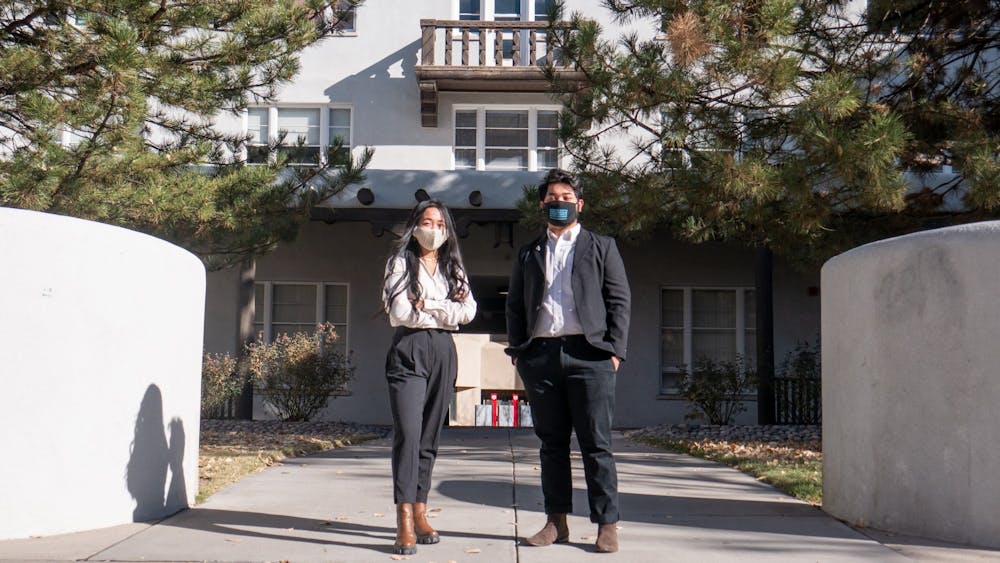The Asian Pacific American Culture Center (APACC) is still laying the groundwork for how it plans to serve the Asian community at the University of New Mexico.
Formalized last year by the Student Fee Review Board, the APACC was conceived in response to the absence of an on-campus resource center for Asian American students.
Directors Jacob Olaguir and Emma Hotz and the APACC Student Board, which includes the current Asian American Students Association (AASA) president Helen Zhao, are now laying the foundation to “create a home and resource center for students of APIDA (Asian Americans, Pacific Islanders and Desi Americans) heritage during their studies at the University,” according to the funding application submitted in the fall of last year.
The emergent APACC, whose directors are currently looking to opt for a more inclusive title, is dedicated to all APIDA students and is seeking to model itself after established resource centers on campus like El Centro de la Raza and the LGBTQ Resource Center.
“I hope eventually (APACC) will mirror the same structure and we’ll be able to do a lot of the same things that they’re doing right now like work opportunities, internships, scholarship opportunities and having that sense of community,” Hotz said.
Hotz, an Asian American student, insisted on building a community among those of a similar ethnic background to ensure a sense of belonging in college.
Olaguir, on a similar note, credited the creation of APACC to a promise he made to underrepresented minorities during his ASUNM campaign earlier last year.
“For me, it’s about representation and making sure the University acknowledges us,” Olaguir said in an interview with the Daily Lobo. “Asian students need to be celebrated for their accomplishments and supported during their learning.”
Though the APACC would initiate student success services, Olaguir wants the APACC to reach beyond to “(bridge) the gap between all these different cultures and come to an understanding of what it means to build our identity in this nation.”
According to UNM’s fall 2020 enrollment headcount, Asian students make up 4% of the student population, but the report fails to account for Middle Eastern and Arab American students who have to classify as white due to inaccurate ethnic and racial identification categories.
Furthermore, Olaguir hopes the resource center will be able to “(bridge) the gap” between international students, 54% of whom are from Asia as of 2019, and the established APIDA community at UNM.
After witnessing the prosperity of other Asian-focused organizations on campus — like the AASA, the Filipino Student Organization (FSO) and the Chinese Student and Scholar Association — Olaguir, who is half Mexican and half Filipino, recognized “a want and a need for community for students who are Asian.”
For Hotz, the growing popularity of AASA was reflective of that need for community as an answer to not only the lack of catered resources for APIDA students but also to her own questions and development in identity as an Asian American.
Get content from The Daily Lobo delivered to your inbox
The APACC collaborated with AASA and FSO to help with outreach for their petition to establish the resource center in March. The petition, started by Hotz, has since amassed over one thousand signatures.
On top of advocating for the development of academic resources, the petition noted increased discrimination targeting the Asian community following the COVID-19 pandemic. With lame duck President Donald Trump insistent on blaming China for the coronavirus, there has been a surge in hate crimes targeting Asian Americans, including on campus at the Lobo Village, such as a dorm vandalization last year and a professor’s racist social media profile.
“(Discrimination is) very prevalent right now, and that’s something I want to combat with this center — really making sure that students feel heard and recognized but also have a place to come to if they are feeling those effects,” Hotz said.
According to Hotz, the APACC is currently based in the College Enrichment Program but aims to secure its own central location on campus.
In addition to securing a permanent space post-pandemic, the APACC is working on several other ground-up projects like establishing a website and connecting with Asian alumni to request donations. The center also plans to expand AASA’s “Big/ Little” program, which pairs underclassmen with upperclassmen in a mentorship program, as well as host a cultural event in celebration of Asian American and Pacific Islander Heritage Month in May.
Though the funding was approved, the organization formalized and plans laid, Olaguir argued that there are still steps that need to be taken to fully institute the APACC.
“It’s not really established. There’s more work to do, and we look toward the future,” Olaguir said.
Gabriel Biadora is a beat reporter at the Daily Lobo. He can be contacted at culture@dailylobo.com or on Twitter @gabrielbiadora






